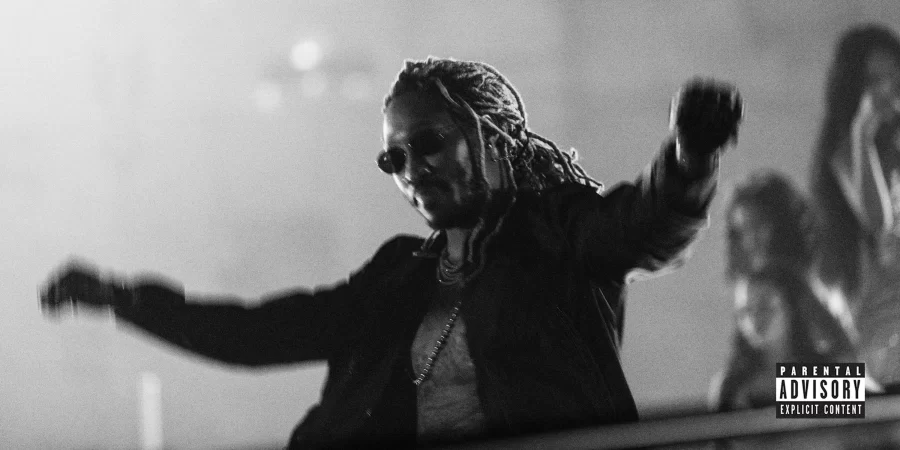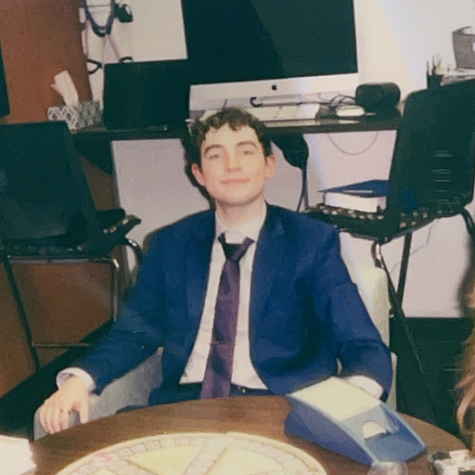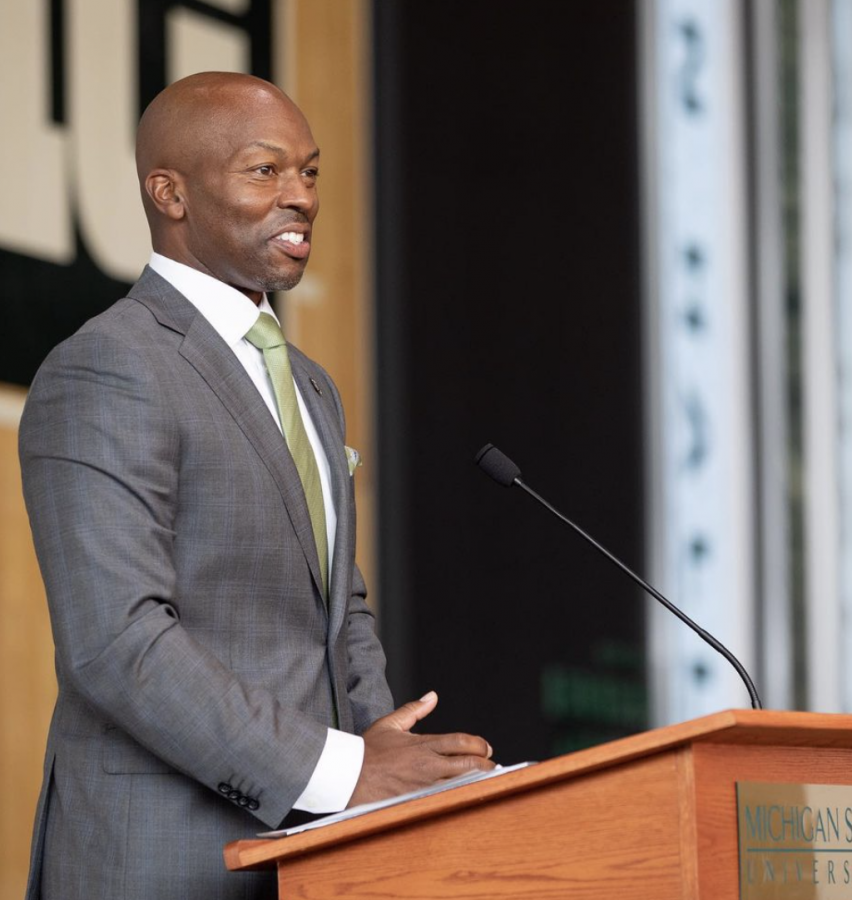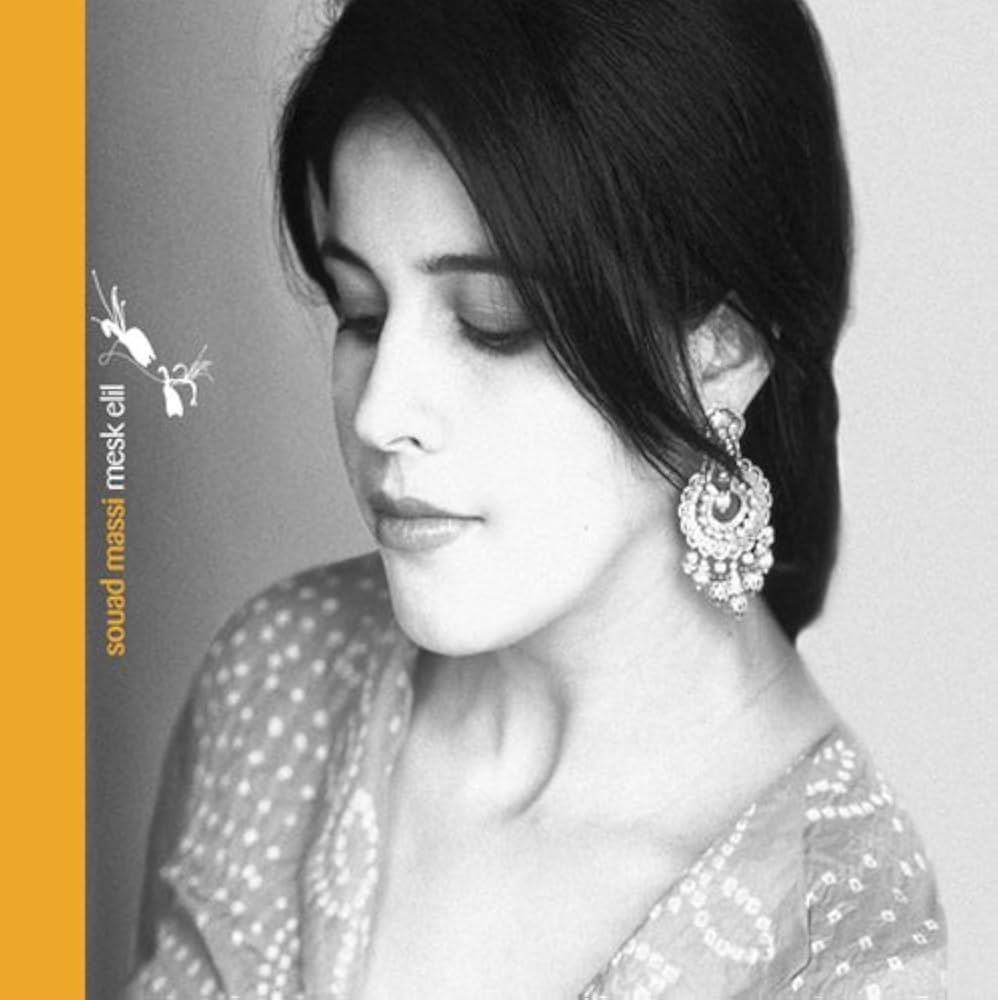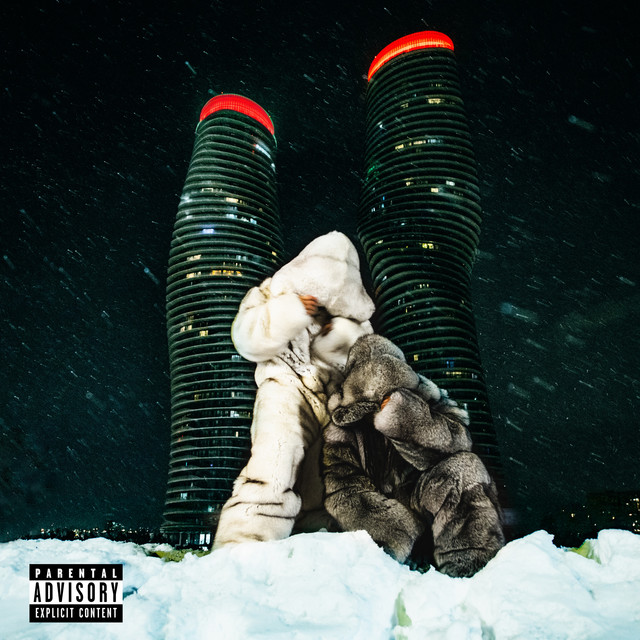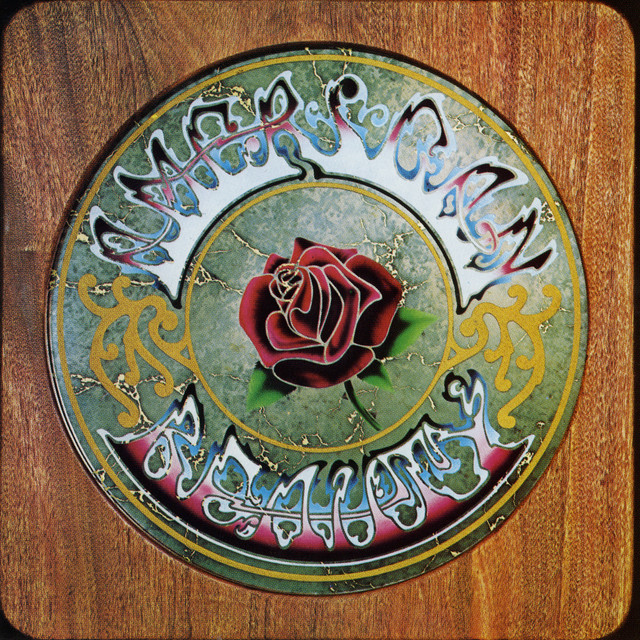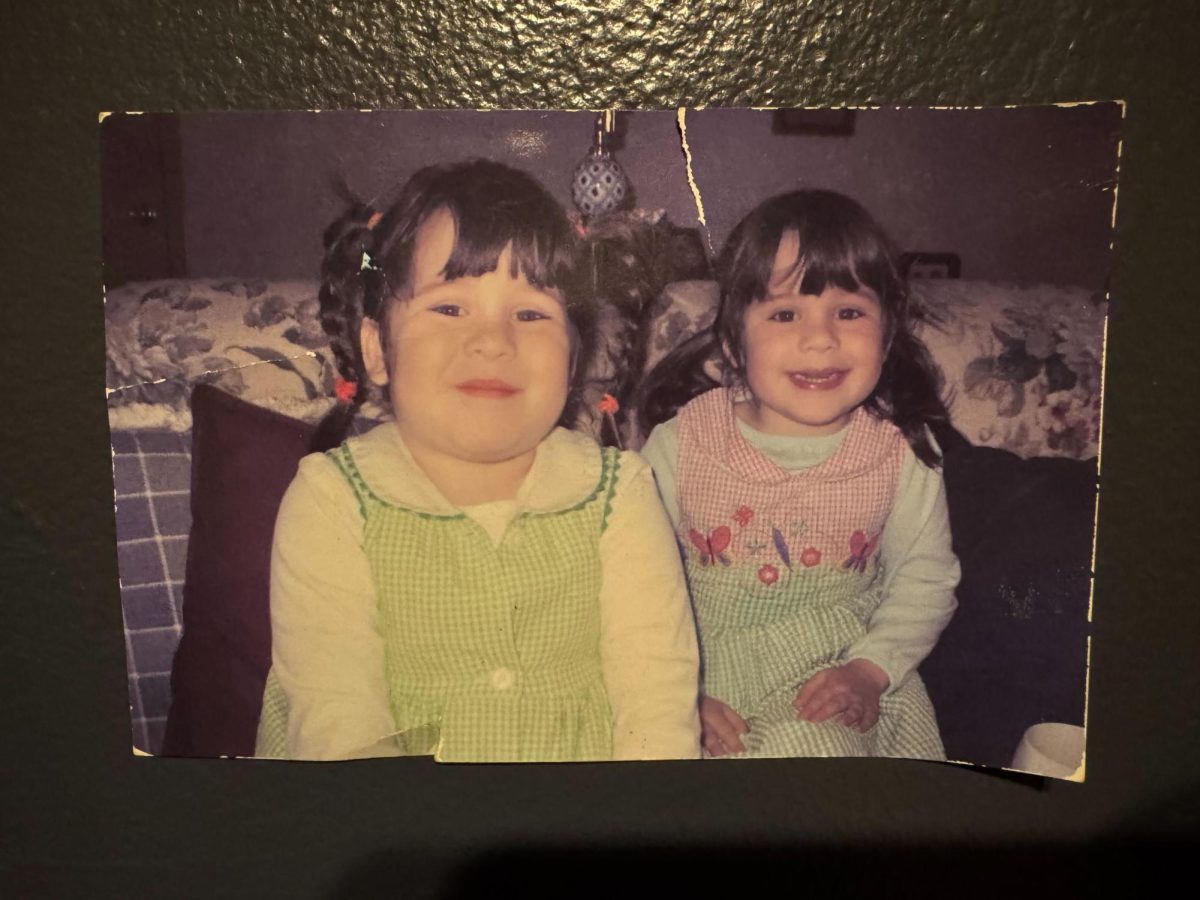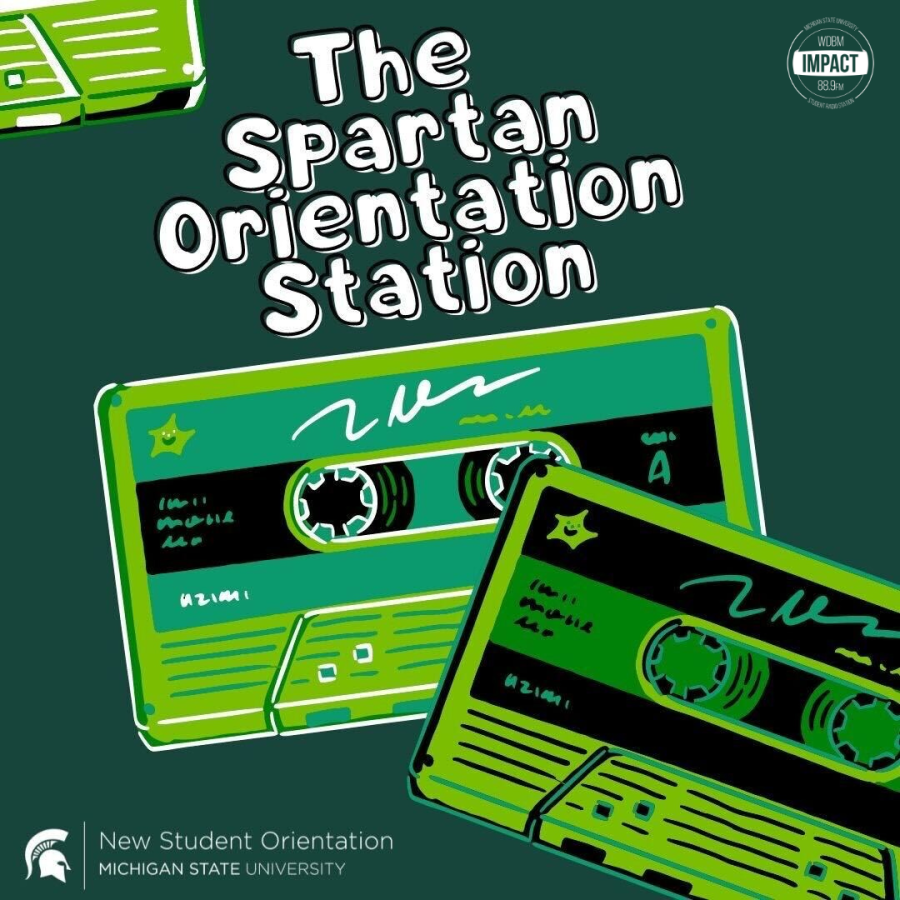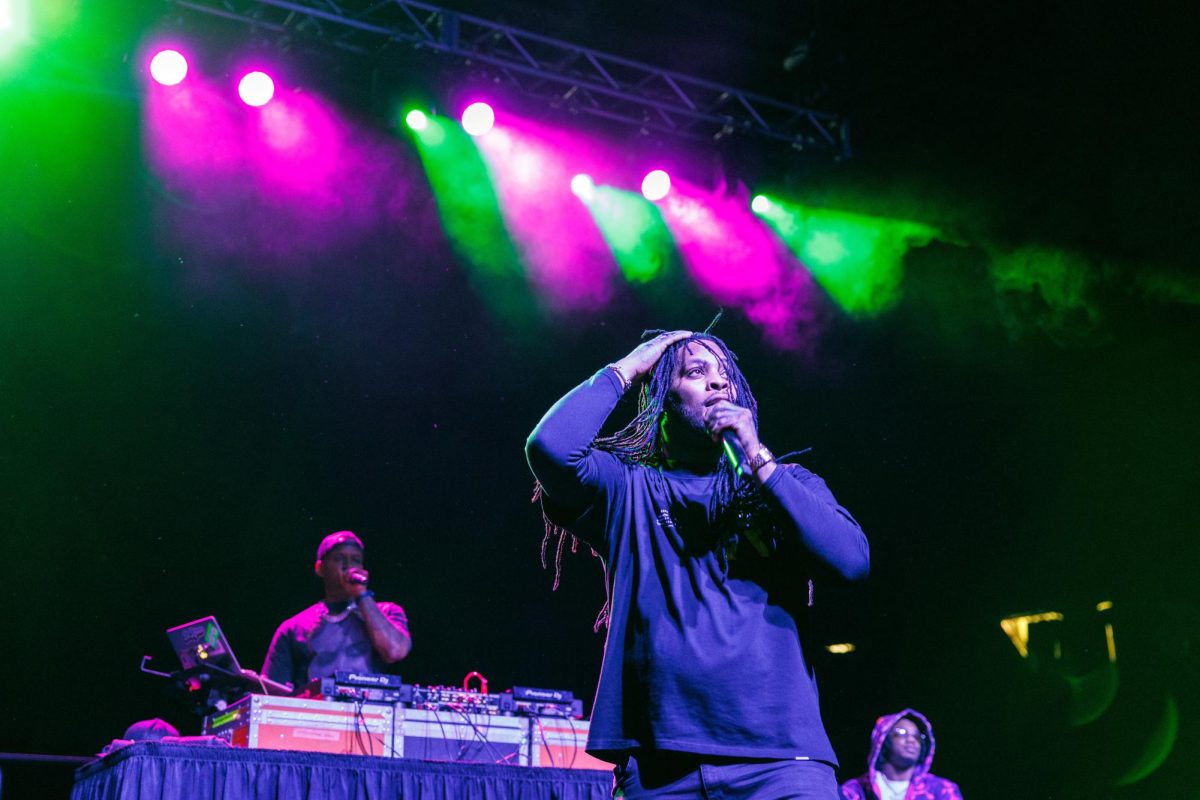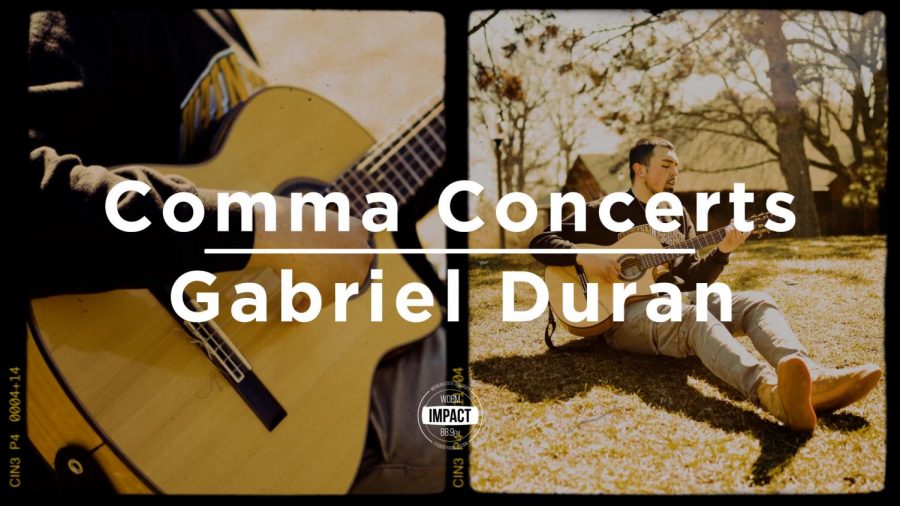Future February: Sam Kurtzman
March 29, 2023
Last month, I took it upon myself to become acquainted with the catalog of the legendary Atlanta rapper Future. As an avid hip-hop listener, I was already acquainted with a number of his albums and even more of his feature appearances and singles. In fact, one of the very first songs that started me on the path to becoming a hip-hop fan was “Codeine Crazy” off his landmark mixtape, Monster. But, beyond my brief obsession with the song and my using it as a jumping-off point to a number of different hip-hop subgenres, I left Future and the trap genre largely untouched to delve into other areas.
To make a long and uninteresting story short, after a couple of years and a few chance run-ins with more of Future’s work, I decided to fully commit myself to listening to his whole discography, or at least what was on streaming services. It happened in the waning days of Jan. 2023: I was idling in my office at Impact 89FM, as I usually do, and then it struck me. Future February. I have always been one for alliteration, so this random thought was perhaps triggered by my listening to “Relationship” by Young Thug featuring Future, which caused the idea to become stuck in my mind.
Within minutes, this thought had blossomed into a master plan. This master plan took the form of a spreadsheet containing Future’s albums and space to leave my thoughts and ratings. It was through this spreadsheet that I would plan and launch my voyage through Future’s 22 full-length projects on streaming. I would listen to an album — or mixtape, if you want to split hairs — a day until I had heard everything, leaving six days at the end of the month for reflection.
This fateful February changed my perception of the hip-hop landscape and opened my eyes to Future’s mythological journey of a career. I was joined by my good friend, Taylor Truszkowski, and we have decided to share our experiences with a pair of articles, this being one of them. Without further ado, let’s embark on this rollercoaster of a trap odyssey.
We should start with the release of Future’s 2014 album Honest. At this point in his career, Future had released a slew of successful mixtapes and was finally settling into his sound as a pop-rapper. This was reflected in both the feature list and lyrical content of Honest. Future is joined by a star-studded cast of guests like Pharrell, Kanye West, Drake and Andre 3000 as he speaks on his rise through the ranks of the industry. There are a lot of melodic and pop-friendly earworms across the tracklist, which are certainly not indicative of Future’s current sound, but a pivotal moment in Future’s life swept Honest’s core sound aside after the album’s release.
Future and his former fiancée, Ciara, a successful musician in her own right, had split up amid rumors of Future’s infidelity. Future, not one to take breaks between albums, took the anguish springing from his shattered heart and immediately hopped into the studio, channeling his emotions into one of his most defining projects: The 2014 mixtape Monster.
Monster is the product of a damaged man. Future’s delivery and subject matter invoke a drug-fueled safari that has taken a dark turn downriver. The tape opens with a warbled groan resembling an ancient monastic chant as Future languishes in his radical lifestyle. On the song “Throw Away,” he addresses the Ciara breakup. Following a series of verses in which he claims the women he sleeps with are worth nothing to him, a beat switch kicks in, and, in an ironic twist, Future laments that he himself feels worthless. In his eyes, he was discarded by Ciara after he made the “minor” mistake of being unfaithful.
After a remarkable run of ruthless trap bangers, Future closes out the tracklist with one of his most emotional songs, “Codeine Crazy.” This harrowing track finds Future staring into a mirror amidst what I imagine to be a codeine-fueled bender, admitting that he is a drug addict. This confirms what had been hinted at over the course of the project: that Future has fallen into a hazy trench of drug abuse and debauchery, as if his trajectory toward becoming a pop-rap star had never existed to begin with.
Future’s path seemed uncertain after this. Monster was extraordinarily well received, but the question lingered: What next? Future had an answer. Tripling down on Monster’s sound and subject matter, he released three legendary projects that honed the Future formula we know today. The mixtapes Beast Mode and 56 Nights led into what many consider to be the definitive trap album of the generation: DS2. DS2 is the culmination of the dark, drugged-up sound he had been cultivating since Monster. Every song on the album features an incredible beat, and Future raps over each one like the rent is due. He flows over the stellar production like a man possessed; every word feels like it may conclude his final coherent thought before he lapses into a complete breakdown.
On “Groupies,” Future adopts a guttural growl that never fails to wrench my attention into a savage chokehold, even dozens of re-listens later. Here, in 2015, we find Future at the top of the trap genre, a quick pivot from his status hardly over a year ago as pop-rap’s next golden child.
This switch up is reflected in his follow-up to DS2, What A Time To Be Alive. This collaborative project with Drake is in stark contrast to previous Drake/Future collaborations, like the song “Never Satisfied” off Honest. On “Never Satisfied,” Future had been trying to fit in Drake’s mold, crooning over an instrumental more suited for Drake than himself. On What A Time To Be Alive, Drake finds himself firmly in Future and Metro Boomin’s 808-laden domain. That is not to say Drake sounds uncomfortable, he still delivers, but it is clear that Future is leading the charge with his newfound clout as a next generation trap pioneer.
Further solidifying his trailblazer status with the releases of Purple Reign and EVOL, Future positioned himself to make an unusual career gamble. In 2017, Future released the self-titled FUTURE and followed it up less than a month later with HNDRXX. This is perhaps the most defining duology of Future’s discography. Both projects are 17 songs long and feature few guest artists beyond the bonus tracks. For many others in the trap genre this sort of output in such a short time would lead to oversaturation, but Future was able to vastly differentiate the two projects, as he dove into the two core personas he’s held since the start of his career.
FUTURE finds our titular rapper recounting what feels like an origin story, as he primarily focuses on his early days in Atlanta and his various escapades dealing drugs and collecting the money that comes with it. He paints us a vivid picture of a musty kitchen-turned-drug-lab on songs like “Scrape,” “When I Was Broke” and the fantastic closing track, “Feds Did a Sweep.” “Feds Did a Sweep” sounds like the end of an era, an outro to not only the album, but to this stage of Future’s life as well. Lyrically, the track takes us through Future’s thoughts as federal law enforcement bust his drug operation, taking many of his friends and associates into custody. Sonically, the song’s vibe is more laid back than what came before it, more in vein with the follow-up album, HNDRXX, making it the perfect segue into the stylistic switch up of its successor.
Future is out of the drug game on HNDRXX, and we find ourselves fast forwarded to him in the current day, surrounded by fame and excess. But, as many artists at the top have expressed, he lacks something deeper. HNDRXX is Future at his most vulnerable. We see a resurgence of melody within his music, but it is not reminiscent of the pop-rap approach seen on Honest. Here, Future is pouring his soul out to the listener in whichever form it comes, whether it be singing, rapping or a blend of the two.
He closes the album with “Sorry,” perhaps his most potent and transparent outro since “Codeine Crazy.” “Sorry” is an apology clearly addressed to his former fiancée, Ciara. He admits his faults and expresses that he is “sorry it’s gotta be this way” as he makes an attempt to extend the olive branch. Ciara and Future’s breakup was rocky, to say the least, as it involved defamation lawsuits and custody battles. After all, it is what triggered the drastic shift in Future’s career trajectory in the first place. The impact is even more evident when you consider that Future made a remix of Ciara’s song also titled “Sorry” in the early days of his career. It forms a full circle, and you would think this may have brought some peace to Future’s tormented soul.
Think again, as Future’s next full-length album, Future Hndrxx Presents: The WIZRD, finds Future in perhaps the deepest pit of his career. The WIZRD sounds like an active war zone in which all the combatants are under the influence of promethazine. It’s as if DS2 took FUTURE and HNDRXX then brewed up a devilish mixture embodying a twisted amalgamation of all three. There are minimal features once again: 18 of the 20 tracks are solo performances from Future. He relays his breakneck lifestyle as a whirlwind of drug-addled confusion, engaging in hedonistic activity and violent acts that are sure to make any man of the cloth shudder at their mere mention. He is clearly aware that he is not in the right state of mind, and he seems like he wants to escape from his self-imposed cycle of substance abuse, a cycle which leads to violence and excess. On the track “Tricks on Me,” Future can no longer distinguish between reality and his own hallucinations. He is adrift in a tumultuous codeine sea, at the mercy of its ever-raging monsoons.
Future leaves us in suspense as to where he is going next, ending the album on a cliffhanger. He wants out, and he begins to claw his way out of the pit on perhaps the most unique entry in his catalog: SAVE ME. Its closest analog is perhaps HNDRXX, but even that comparison does not adequately capture the pocket that Future places himself in here. “Xanax Damage” finds Future crooning about the consequences of his actions in a manner that somehow manages to be simultaneously unsettling and soothing. Over the course of this EP it is made clear that Future, by the grace of some higher power or perhaps his own sheer will, has started his climb out of the depths of his mind, handhold by handhold. The EP closes with “Love Thy Enemies,” where Future addresses some of his previous conflicts with exes while also sprinkling in a healthy amount of biblical allusions, implying that he has perhaps found solace in religion.
Regardless of how he found it, Future carries the self improvement momentum through his next album: High Off Life. As the title suggests, this album finds Future less reliant on drugs than he ever has been before, though he is certainly not clean. Rather than engaging in senseless excess, he is now enjoying the experiences that come with a lavish lifestyle surrounded by friends and protégés. He is joined by many of his previous frequent collaborators to celebrate their bonds, chemistry and good fortunes.
Young Thug and Lil Uzi Vert, two artists massively influenced by Future, have memorable guest appearances and remind us why each has their own full-length collaborative project with him. Future reunites with Drake once again for “Life Is Good,” a self-explanatory anthem encapsulating both his current state of mind and the tone of the album. On “Accepting My Flaws,” he admits that he could have better habits, but, rather than trying to cope with his imperfection in unhealthy ways, he instead embraces it. It finally feels as though Future has settled into a happy rhythm for the first time since he released Honest.
As both a fan and someone who had been listening to his discography chronologically for the entirety of February, High Off Life is a fitting resolution to the turmoil that Future has experienced over his massively iconic and influential career. That is not to say his music beyond that is not worthwhile: It certainly is. It is just that these projects are more like the epilogue to the poetic conclusion of an epic journey rather than a continuation. But who knows, Future is showing no signs of stopping when it comes to making music. Perhaps there are more twists and turns to be had.
Engaging in Future February was a musical experience that I will not soon forget, and maybe Truszkowski and I’s sharing of our experiences will inspire some to take the plunge into Future’s expansive discography next February. Perhaps some will take the plunge even sooner: It’s semantics, after all.
To read Truszkowski’s Future February article, click here.



